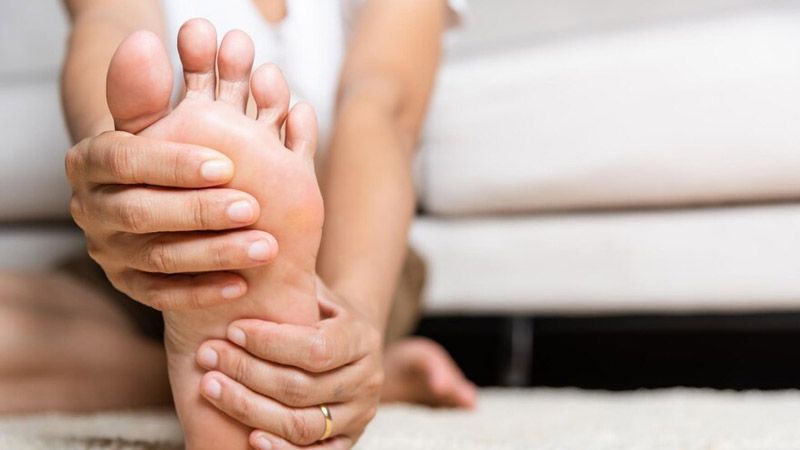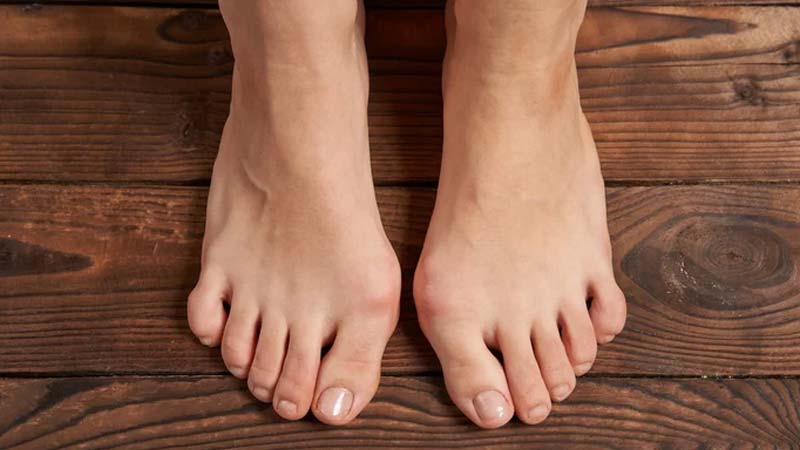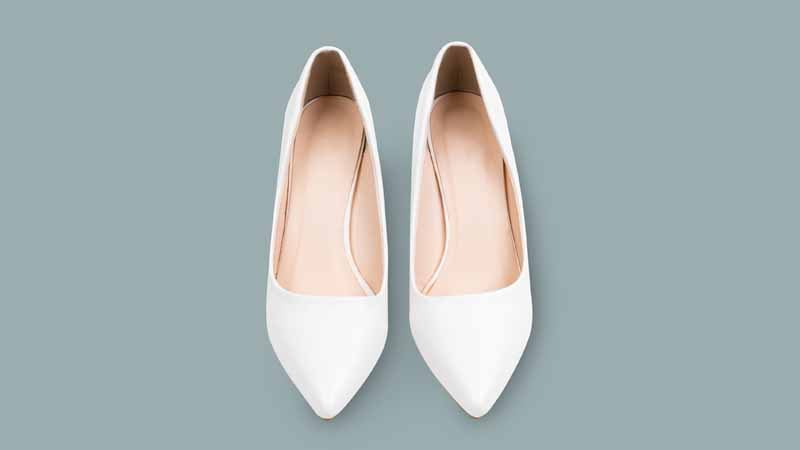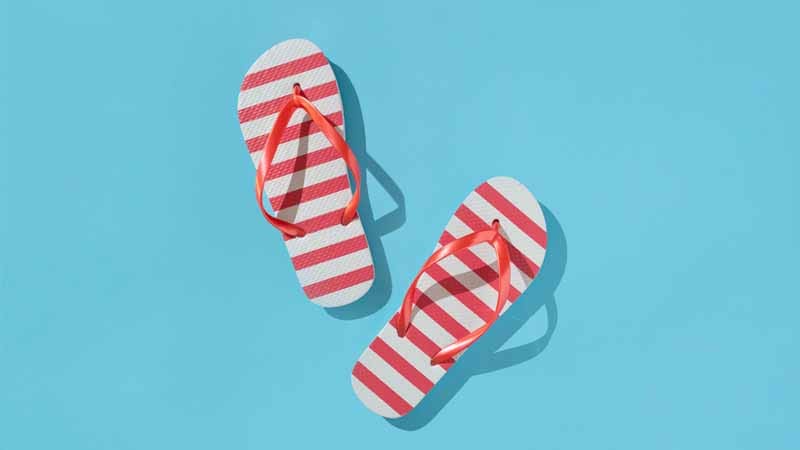Can Faulty Footwear Lead To Injuries, Back Ache, And More?
39 months ago
6 minute read.

Shoes are among the best inventions of humans since they offer the care and protection that your feet deserve. However, if you buy the wrong shoes, you are endangering your feet. Ill-fitting shoes will make not only strolling but even standing painful.
Didn't you know that? Well, we got you covered. This blog discusses what problems faulty footwear can lead to, along with the worst types of shoes that lead to problems. You'll also find some useful tips for selecting the right pair. So, read in full.
Can Wrong Footwear Cause Pain?
A poor footwear design may not provide sufficient support, squeeze the feet, cause foot pain, or fail to match the normal arch of the feet, resulting in discomfort, back pain, and other problems.

Heels, for example, tend to force the pelvic region forward and the hips behind. If left unchecked, this can lead to menstrual dysfunction, increase period pains as well as affect the ability to conceive in certain cases. Wearing ill-fitting shoes can result in several foot disorders such as:
1. Neuropathy

Peripheral neuropathy is a severe and often permanent illness characterized by symptoms such as pins and needles in the feet and numbness. Certain disorders more prevalent in older people, including diabetic neuropathy, can worsen the symptoms and prognosis when combined with ill-fitting shoes.
2. Deformities And Foot Pain

If you already suffer from a foot deformity, shoes with a smooth contour that puts a strain on the unevenly formed bone regions of your foot can aggravate it.
However, if you aren't suffering from any foot deformity, wearing footwear that doesn't match your feet's contour could lead to foot pain and eventual deformity.
[ Must Check: 5 Easy Home Remedies for Foot Blisters ]
3. Ingrown Toenails

Whether your footwear is too tight or too short, the increased pressure on your toe can cause the edge of your toenail to grow into your epidermis. Ingrown toenails can make the area around your toenails red and inflamed.
To avoid this problem, wear correctly fitted shoes and avoid touching your fingernails too short or curved at the ends.
4. Bunions

A bunion seems like a lump at the foot of your big toe. However, it is actually your joint protruding. So, when the big toe is squeezed excessively, like when crammed into a set of tight stilettos, stress is applied to the joint, making it red and sensitive.
Bunions can form as a result of illnesses like arthritis, but wearing narrow shoes exacerbates the discomfort.
[ Attention: Have You Checked Your Feet Today? ]
Can Ill-Fitting Shoes Cause Plantar Fasciitis?
Plantar fasciitis can be caused by wearing ill-fitting shoes. It's characterized by sharp heel pain that goes directly across the foot. This pain is caused by inflammation of the plantar fascia, a thick belt of tissues in the heel. Patients say the first footsteps they take after waking up hurt the most.
Although Plantar fasciitis is caused by numerous circumstances, inflammation is the most common one, especially for those who engage in physical activities that put too much strain on their heels. For example, long-distance running.
Visit a physical therapist for quick and stable healing. They can put you on a wellness and health regimen that includes easy, efficient heel exercises.
In case of self-treatment, consult a physician online on The Wellness Corner for expert guidance. It is advisable not to choose any over-the-counter product without consulting a doctor. Certain sources on the internet may be misleading and might make your issues even worse.
Start the self-treatment only after receiving a green flag from the expert.
[ Also Check: Cure Cracked Heels. Make Your Feet Beautiful Again]
Worst Type of Footwears
Fashion shoes may be appealing but aren't good for your body, especially your feet. Foot and ankle physicians refer to improper shoes, particularly stilettos, as shoe-inside.
As internet shopping becomes more widespread, there is more temptation to buy and wear footwear that appears attractive but may not fit well. The following are the types of footwear you must avoid if you can:
1. Shoes With Pointy Toes

Women, in particular, are more prone to buy footwear that is too tight and small at the front, such as pointy bellies. This sort of shoe can develop corns, bunions, and other toe abnormalities like hammer and claw toes crossed over toes, and ingrown toenails, which may necessitate surgery to repair.
2. High-Heeled Shoes

High heels, according to the American Podiatric Medical Association, can cause anything from ankle sprains to persistent discomfort in the heels, knees, back, and shoulders. According to a 2010 study, women who wore heels five times a week for two years had 13% shorter calf muscles and stiffer and thicker Achilles tendons compared to those who didn't wear heels.
3. Ballet Shoes

Wearing tiny flats is like treading on cardboard. There is no arch support, which prevents the feet from working properly and can result in knee, hip, and back injuries. Plantar fasciitis, a painful heel ailment, is also linked to inadequate arch support.
4. Flip-Flops

Flip-flops provide no security. Splinters and other ankle injuries are more likely when the feet are exposed. Diabetes patients should avoid wearing flip-flops since minor cuts and scrapes can escalate to major problems. Furthermore, most flip-flops do not include ankle support. These, like flats, can cause plantar fasciitis.
5. Platform Shoes

Platform heels and wedges typically feature hard footbeds that disrupt walking biomechanics. Your foot is attempting to bend in a specific direction, but the footwear is resisting since it is so rigid. If the platform's heel is significantly greater than just the toe area, the shoe suffers from all of the issues associated with high-heel shoes.
6. Shoes Of The Wrong Size

Nine out of ten women have footwear that is too tight. Corns, ulcers, bunions, corns, and other complications, are the result. The frequent rubbing might cause foot arthritis by irritating the joints.
Tips For Selecting Proper Shoes
Feet Care is very important. Therefore, you must choose the right type of footwear to ensure complete comfort. Here are the steps you can take:
- Make a few steps in your footwear to ensure they are comfy. When selecting footwear, people frequently overlook the time we spend sitting, standing, or walking. And that could be a mistake.
- Check if the shoes have a good grip on your heel. When you move, your heel really shouldn't slip in the shoes. You can use an anti-friction stick or powder to prevent sweating.
- Consider both breadth and length. If the ball of your heel seems squished, inquire whether the shoe is available in a larger size. Footwear that is a half-size bigger but not wide enough may be ineffective.
Wrapping Up
If you do not put in decent research, you might end up buying bad shoes that can create problems for your fee. So, spend a little time in the shoe store trying on various shoes.
Before deciding on your footwear, evaluate the sports you are likely to engage in. Once you do, follow the aforementioned tips, and you're good to go.
Leave a Comment
Related Articles
Health Checks @ Home
Service
Explore
© 2025 Truworth Health Technologies Pvt. Ltd.




